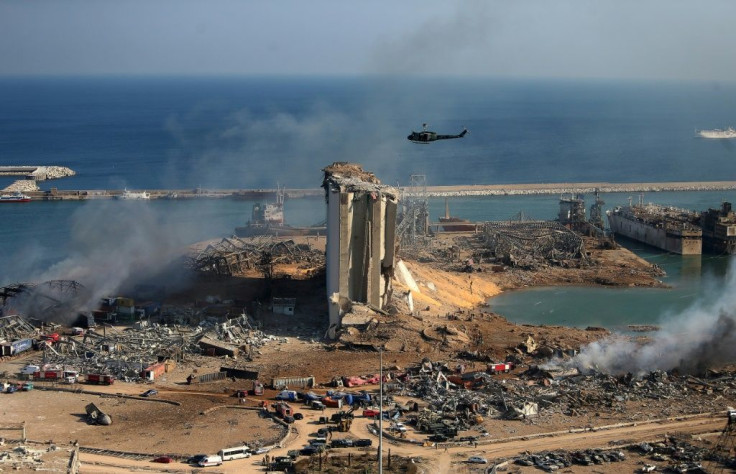Satellite Images Capture Beirut Explosion Aftermath From Space

KEY POINTS
- Aerospace companies captured satellite images of the Beirut explosion
- Planet Labs and Maxar Technologies showed before-and-after photos of the Port of Beirut
- The explosion originated from a warehouse containing over 2,000 tons of ammonium nitrate
Private aerospace companies were able to capture satellite images of the destruction left by Tuesday's explosion in Beirut, Lebanon. The images taken from space clearly show how much the affected area changed following the massive explosion.
A day after the devastating event, San Francisco-based Earth-imaging company Planet Labs captured photos of what’s left of the Port of Beirut using the SkySat satellite.
The image, which was placed beside a photo taken before the explosion, clearly showed the changes in the area. The most noticeable difference between the two photos is the missing chunk of land in the port.
Before and after SkySat imagery shows the impact of yesterday’s explosion in Beirut.
— Planet (@planet) August 5, 2020
Imagery captured on May 31, 2020 and today, August 5, 2020. pic.twitter.com/8zCLDOZn4w
Aside from Planet Labs, space tech firm Maxar Technologies from Colorado also released satellite images of the Beirut explosion’s aftermath. Through a recent tweet, the company shared a GIF showing before-and-after photos of the Port of Beirut.
Aside from the missing piece of land where the explosion occurred, empty spaces where warehouses and other buildings used to be can also be seen in the photo. According to reports, the structures near the source of the explosion were immediately obliterated by the blast.
Before and after images from the #explosion that happened in #Beirut, #Lebanon on August 4, 2020. Before image from June 2020 and after image from today, August 5, 2020. More imagery showing the devastation will follow. pic.twitter.com/dfj4ItyTXL
— Maxar Technologies (@Maxar) August 5, 2020
Experts from the University of Sheffield in the U.K. noted that the energy released by the Beirut explosion was about a tenth of the power of the atomic bomb used by the U.S. against Japan in World War II, BBC reported.
The explosion originated from a warehouse that contained 2,750 tons of ammonium nitrate, an explosive compound that’s commonly used as fertilizer. It came from an abandoned ship that was impounded by Lebanese authorities in 2013. Although the powerful blast was caused by the stockpile of ammonium nitrate, it is not yet clear what triggered the compound to explode.
The devastating incident left over 135 people dead and more than 5,000 injured. Authorities also reported that about 80 people are missing due to the explosion.
Raoul Nehme, Lebanon’s Economy Minster, cited improper management of the confiscated ammonium nitrate and the incompetence of officials as the primary reasons behind the explosion.
“I think it is incompetence and really bad management and there are a lot of responsibilities from management and probably previous governments,” he told the BBC. “We do not intend after such an explosion to stay silent on who is responsible for what.”
© Copyright IBTimes 2025. All rights reserved.





















